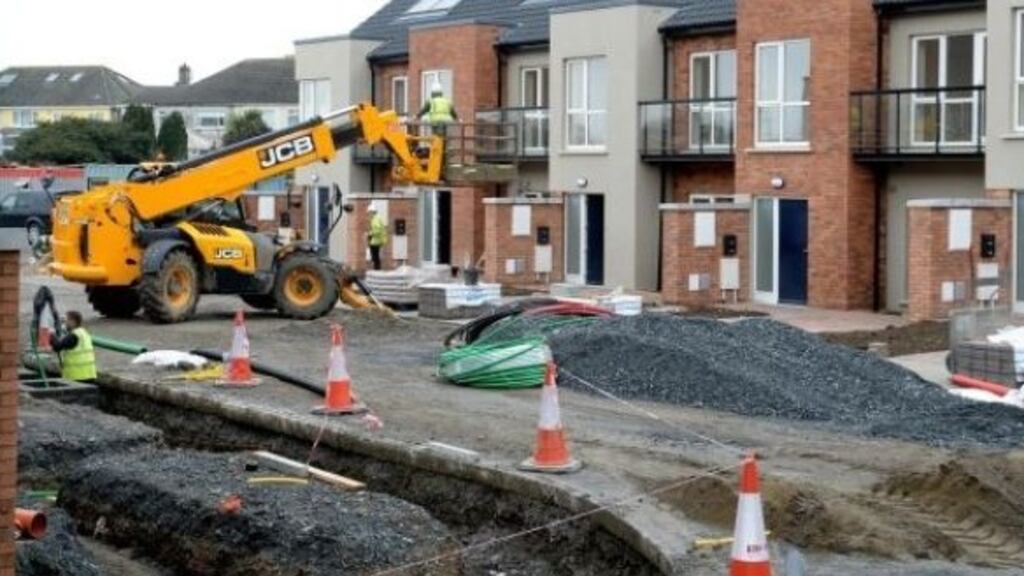In its latest housing market monitor, the Banking & Payments Federation of Ireland highlighted a significant increase in house sales in Dublin’s commuter belt counties – Louth, Meath, Kildare and Wicklow.
A shortage of affordably priced homes for sale or rent in the main cities invariably means households have to search further and further away from where they work or would prefer to live for that ideal home.
All our cities and towns contain lots of amazing potential areas for renewal, centrally located and frequently publicly owned, for homes, jobs, amenities and services
Finding new ways – quickly – to deliver homes and communities that people want and can afford to live in within our cities and towns is the single biggest planning issue we face today. Proper and visionary planning is critical in offering the alternative to the 6am rise and 8pm return too familiar to too many commuters.
Ireland is always changing. Over the next 20 years Ireland will become home to an extra million people, requiring half a million new homes and 600,000 extra jobs under Project Ireland 2040, the Government’s strategic plan.
We have an obligation to plan and manage that change in a much more environmentally responsible way, essentially the right development in the right places and at the right time. Importantly, the Government’s National Planning Framework recognises this and promotes what is known as “compact growth”. This is about delivering good-quality and affordable new housing and infrastructure within the existing built-up areas of cities, towns and villages on infill and/or brownfield sites close to jobs, services and amenities.
All our cities and towns contain lots of amazing potential areas for renewal, centrally located and frequently publicly owned, for homes, jobs, amenities and services. But they need a streamlined and co-ordinated approach to their development, with investment in enabling infrastructure and supporting amenities, to realise their potential. And they don’t need to be undermined by out of town development alternatives that are invariably easier and often cheaper – in the short term – to deliver.
The National Planning Framework target is for at least 40 per cent of all new housing to be delivered within the existing built-up areas of cities, towns and villages on infill and/or brownfield sites. Density and consolidation, not sprawl, is needed.
The scene is set. Government policy on planning has never been clearer, never been as joined up in terms of infrastructure investment following planning rather than the other way around.
What will be the response of the local authorities as they soon approach mandatory reviews of their statutory development plans in the context of new Government planning policies?
It is often claimed that local Government in Ireland is weak and exerts little influence. However, our 949 elected county councillors currently have an unparalleled opportunity to shape how Ireland’s urban, suburban and rural areas will look and function into the future.
This is because over the next six years, at least 200 new city, county and local plans from around the country will be produced. County councillors are responsible for approving these plans which determine which areas get zoned and approved for development.
Vision and leadership at local level is going to be key. But already, pressure is building on local councillors to open up more and more residential zonings stretching out from the cities, particularly Dublin, along mainly road transport-based routes. Do we seriously think that this is the answer?
Last April, the Government established the Office of the Planning Regulator to work with local authorities in ensuring a coherent and effective approach to planning ahead. We will be conducting independent assessment of these statutory plans to ensure they have properly taken on board national and regional planning objectives in addressing the particular planning issues in every one of our 31 local authorities.
There have been recent positive signs of an uplift in the level of interest in advancing major apartment schemes in our cities and an increase in new planning permissions
We will monitor and independently report on the progress being made to meet Government targets for development on urban and brownfield sites.
We’ve already commenced our work by assessing and reviewing several local area draft plans.
If the plans all join up, will the housing developers, including a massively expanded public sector housing programme, be able to deliver? Encouragingly, there have been recent positive signs of an uplift in the level of interest in advancing major apartment schemes in our cities and an increase in new planning permissions. It has taken time but public housing delivery is also increasing significantly now.
However, there is still evidence to suggest our model of apartment and housing delivery is just too expensive, particularly in inner urban areas and that the construction sector could and should, through more innovation and inventiveness, bring the costs of delivering quality homes and quality communities into line with the rents and purchase prices ordinary people can afford.
A positive influence in this process will be the work of the Land Development Agency. This agency is working collaboratively to clear the hurdles in imaginative redevelopment of State-owned lands that enables high-quality and strong delivery of a rich mix of affordable public and private housing.
Just over 50 years since Ireland’s first major planning Act, and having just established an independent Office of the Planning Regulator to support a process of continual enhancement of the quality of our planning process, we now have the golden opportunity in the next generation of city and town and county plans to make the places in which we will want to live and work.
Niall Cussen is the planning regulator









